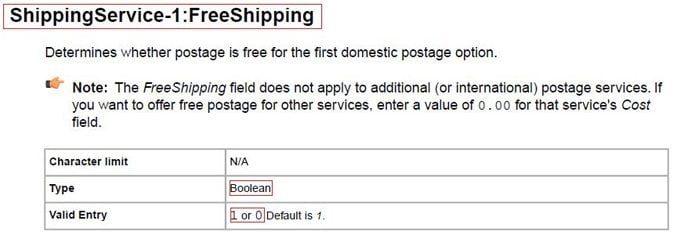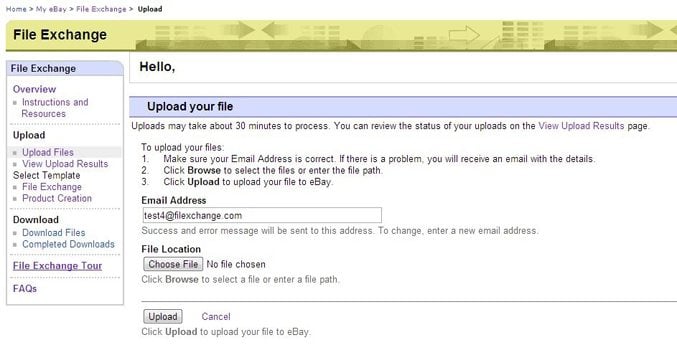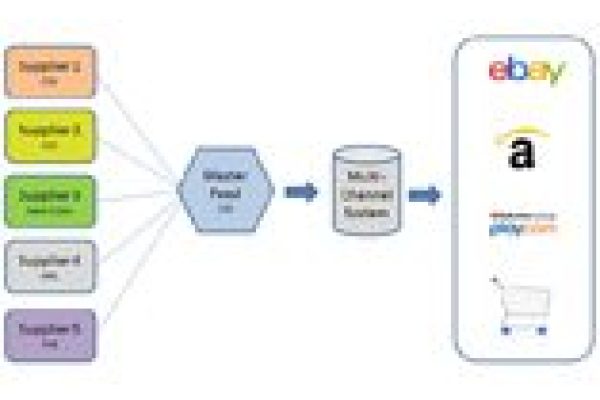 Mark Goodwin works for Transforming Data a Cloud based Data Transformation solutions provider who operate an on-demand hosted data conversion platform doing any to any format conversions for file types ranging from CSV, Flat Files, and XML through to EDI.
Mark Goodwin works for Transforming Data a Cloud based Data Transformation solutions provider who operate an on-demand hosted data conversion platform doing any to any format conversions for file types ranging from CSV, Flat Files, and XML through to EDI.
Mark provides expertise in format conversions into the eBay File exchange format, streamlining the bulk listing process for Sellers. He has offered to share their experience in a series of articles for those wanting to learn how to use File Exchange to automate the mundane and repetitive task of listing on eBay. This is the third article in the series.
File Exchange
In the first part of the series we focused on what is eBay’s File Exchange and how it worked operationally. The second installment of this series focusing on eBay File Exchange format we reviewed the requirements for template design and how to incorporate selling styles into the base template.
In this part of the series we will look at populating fields with the correct data and using verify add function for testing.
As the Action key presents the commands for File Exchange to carry out listing tasks, the other fields provide the essential details to inform on your specific listing choices. Shown below are just some of the examples of the type of details held.
- Description of Item
- Brand Details
- Price (Bidding , Buy It Now, Best Offer, Minimum Best Offer)
- Listing Duration
- Shipping Carriers
- Payments Accepted
- Location of Goods
- Return Policies
eBay has specific Values which have a direct meaning to the File Exchange system. The values used by the File Exchange system can be defined in the following classifications.
Code Values
These are specific codes provided by eBay to classify things such as Item Condition and eBay Categories
Free Text
Free text is provided for item descriptions, titles and policies
Integer
Integer provides for whole number without a fractional or decimal component. An example in use would be Quantity. You can only sell whole quantities such as 4 items not 41/2 items.
Numeric
Numeric caters for field such as currency and tax
Boolean
eBay use the Boolean values of ‘0’ and ‘1’ to enable or disable functions and actions within File Exchange. By example 1 = “on” or “yes”, and 0 = “off” or “no”.
Selecting the Correct Values
The most fool proof method of selecting the correct values is to use the
as a reference.
The Advanced User Guide outlines the expected values and parameters for each field. It will tell you if that field requires Boolean, Integer, Free Text or Code Value.
To make progress with the least amount of frustration, its good practice to lookup every field listed in the template and select the most appropriate values that suits your selling style.
Special Considerations – The Description Field
An area for special consideration within the File Exchange format is that of the Description field. It’s the largest field in the template with a charter limit of 500,000. Within this field you cannot use line breaks and carriage returns. eBay use the HTML <BR> and <P> tags to separate lines into multiple paragraphs. You can only use the open tags for <BR> and <P> and not the closing tags </BR> or </P>.
Testing Process – The First Pass
Once the template has been completed and all the fields have been populated with values and data, the next step is to test it using the VerifyAdd function in the Action Field and uploading the file through File Exchange.
In the testing process we are looking at three main elements.
1. Was the CSV File Accepted by File Exchange
2. Were All records processed in the file exchange queue
3. Upon completion were there any Warning or Error Codes in the upload report
In the next part of the series we will look at file exchange in the post test phase and how to use the upload report to iron out any issues that we may be facing.
Transforming Data’s ‘Inventory to eBay’ Service
However, if you require a streamlined, cost effective and automated approach to bulk listing on eBay we provide a hosted solution called Inventory to eBay which is directly accessible from any desktop or email client. It converts inventory records, spread sheets and catalogue listings directly into the File Exchange format, ready to bulk listings without the requirement for manual data entry.
Data is transformed and enriched by adding the specific eBay related data and codes for individual selling requirements (listing duration, selling format, listing categories, payments accepted, shipping charges, etc.) and delivers formatted files ready for listings.
Sales opportunities are broadened by using Smart Calculations to automatically set percentage increases and discount rates for eBay features such as Buy It Now Price, Best Offer Auto Accept Price, Reserve Price, and Shipping Discount for Multiple Items. A huge time saver if hundreds or thousands of products are required to be listed in bulk.
To find out more about Transforming Data’s eBay solution and other data transformation services, visit their website or contact them by email











